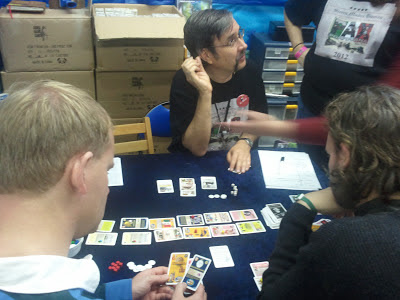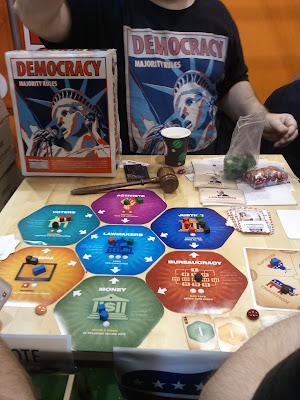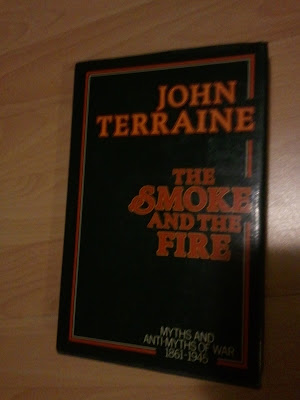The Smoke and the Fire is a well witten and entertaining read with a clear intent. Terraine has no time for studies critical of British commander in chief Douglas Haig and other WWI generals such as
The Donkeys by Alan Clark and
Haig’s Command by Denis Winter. In that sense the book feels a lot like Corrigan’s later
Mud, Blood and Poppycock that also sets out to bust the myths of incompetence and mass slaughter.
This means Terraine also has little sympathy for Lidell Hart and Fuller, the earliest criticasters of WWI generalship. One chapter dismisses Lidell Hart as a man traumatised by his battlefield experience and suggests that Fuller later rescinded on his earlier views. Of course, to Lidell Hart and Fuller, their criticism was not just a matter of history but also a way to advance their ideas of the future of the British army in the Interbellum.
Terraine defends the military leadership by arguing that contrary to the 'donkeys' caricature they did see the potential of modern weapons and quickly adopted many innovations like machine guns and tanks, but that the delays were in development and production. So the civilians were to blame,
really.
Likewise, the maintenance of a sizeable cavalry force was not the result of pigheaded cavalry generals clinging to an outdated arm, but to the fact that cavalry was the only means of operational exploitation of a breakthrough. The technical limits of tanks meant that even by 1918 deep and sustained penetration was impossible. In the spring of 1918 the Germans sorely felt the lack of cavalry to achieve the final breakthrough.
While he acknowledges the cock up that the first day on the Somme was, Terraine argues that this was due to inexperience and too much faith in the effect of artillery. He points out that losses quickly fell and success increased in the following months. And it was the German insistence on counterattack that lent the battle its gruesome human toll. But according to Terraine, that is why it achieved its objective of distracting the Germans from Verdun and wearing the German army out.
 |
| Sadly, my copy of The Donkeys seems to have gone AWOL |
The best point that Terraine makes is that you have to see WWI in the perspective of the American Civil War and WWII. These are wars in which the challenge was not just military but more so in mobilising a complex whole of economy and society towards victory on many battlefields. That also means the war won’t be won in a single battle. Attrition is part and parcel.
As such the war was a huge challenge to the generals involved: training, organising, supplying and leading mass armies in an environment of solidified defensive lines and a mass of new, unproven technology. But those technological advantages are few and short-lived as the enemy catches up.
This applies to WWII as well. Although the Germans can win early on against opponents that haven’t acquired an answer to their operational innovations, this then turns for the worse. Even the string of unprecedented victories in Russia in 1941 cost them more casualties than the battle of Verdun.
Which ties in with Terraine’s firm stance that the object of war is the defeat of the enemy main army. As long as that is in the field, any diversion only means dispersal of force. On this point he criticises both politicians like Lloyd George and Churchill who pursued campaigns in minor theatres as well as theorists like Lidell Hart who advocated an
indirect approach.
 |
| Dispersal of British Imperial forces according to Terraine p 57 |
For Terraine there is no way around it and evasion of the showdown on the Western Front was just a lack of moral courage to face up to the truth and its ugly consequences. Modern warfare, with its mass armies, will result in mass casualties. The search for a bloodless solution only lengthened the war and caused more casualties.
I think that whoever reads Terraine, like Corrigan, has to readjust their visor from the
Lions Led By Donkeys school. But not all the way. Although Terraine often uses statistics and source material to support his point, he rarely goes into great depth, weighing both sides of the argument. It´s hard to find a point where Haig doesn´t come out clean and his detractors come out looking like fools.
Because of that, on a different level this book gave me the indefinable feeling that the lines on these issues in the first post war decades were linked to what faction of British history writers you belonged to. And that was probably related to which school you´d been to, the party you voted for and who published your books. This social dimension gave these discussions a shrill tone that also for example also pervades the post war discussion of
generals like Montgomery. I can´t lay my finger on what the factions were though.
Thanks to Nick for giving me this books as a birthday present. The other was
Tilt by Nicolas Shrady on the history of Pisa and its tower.

































